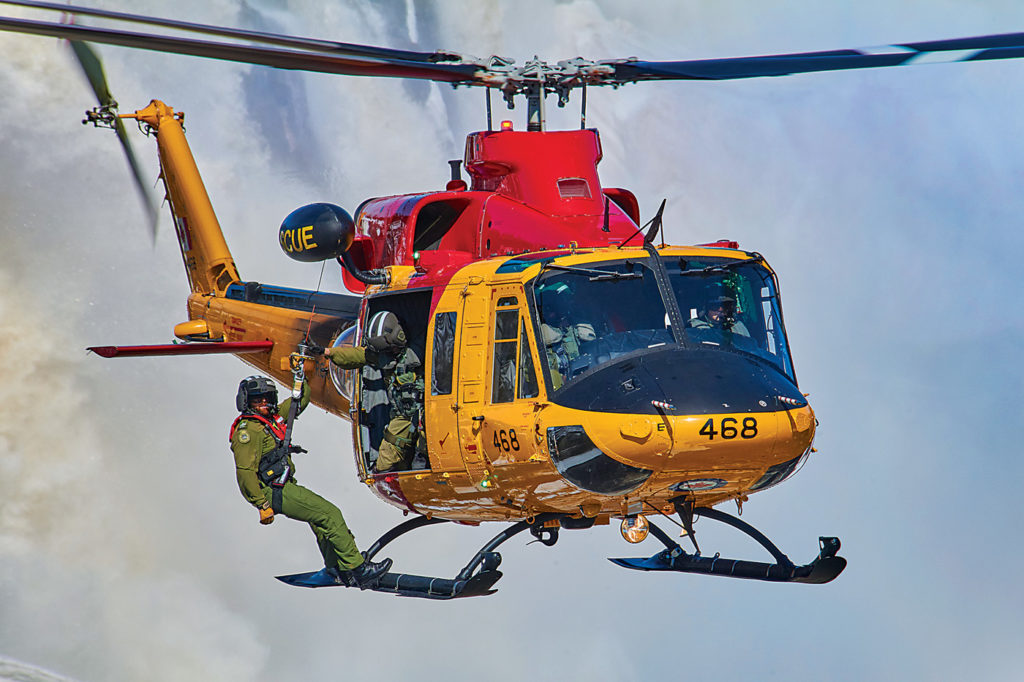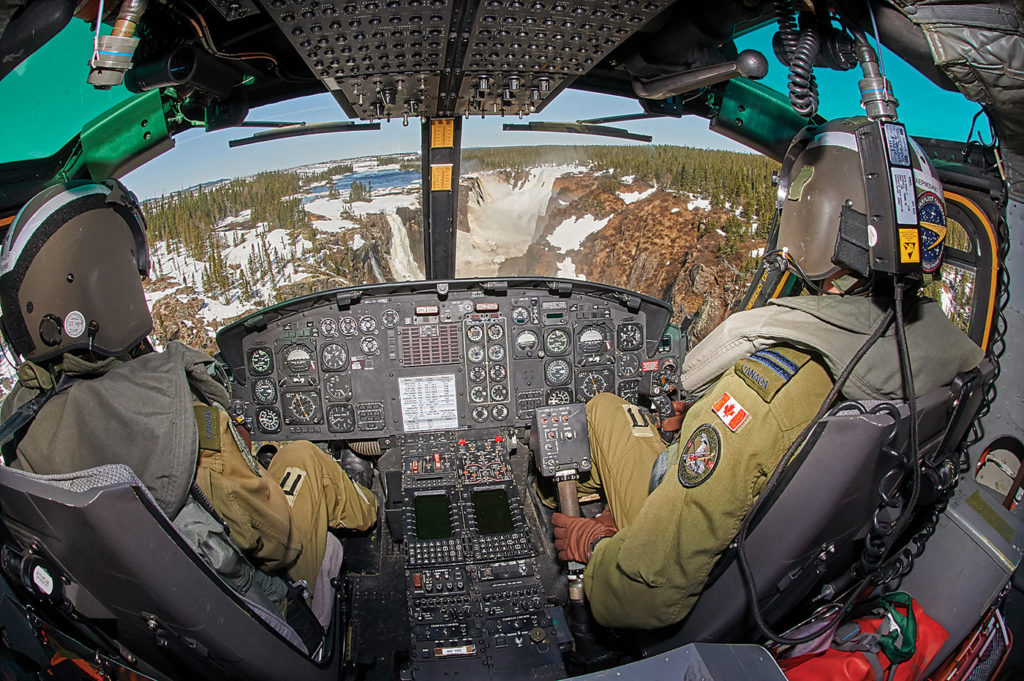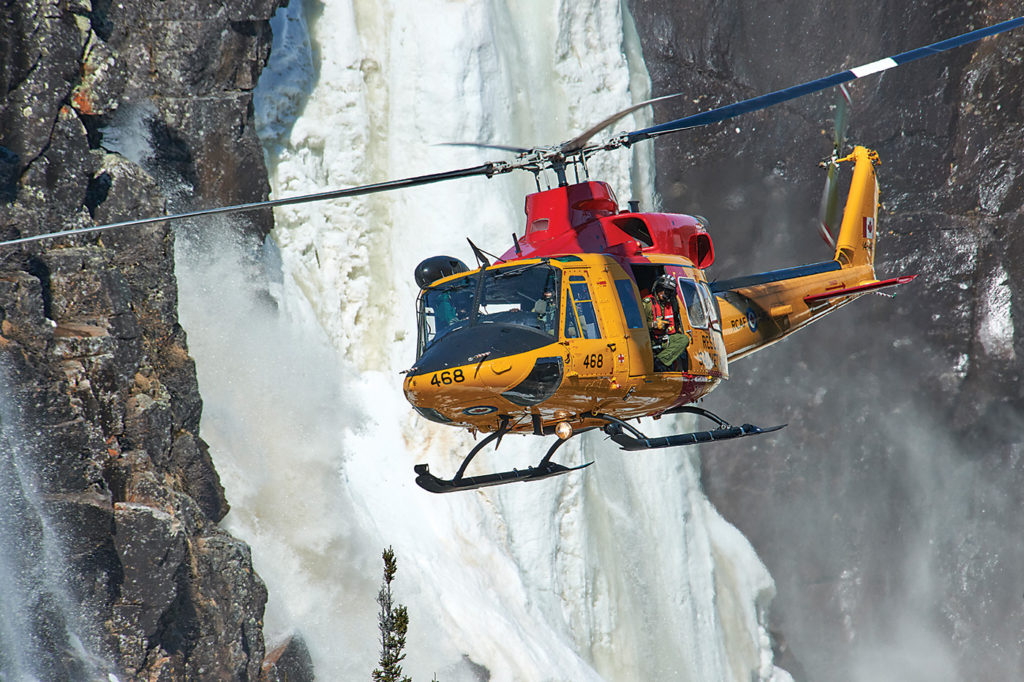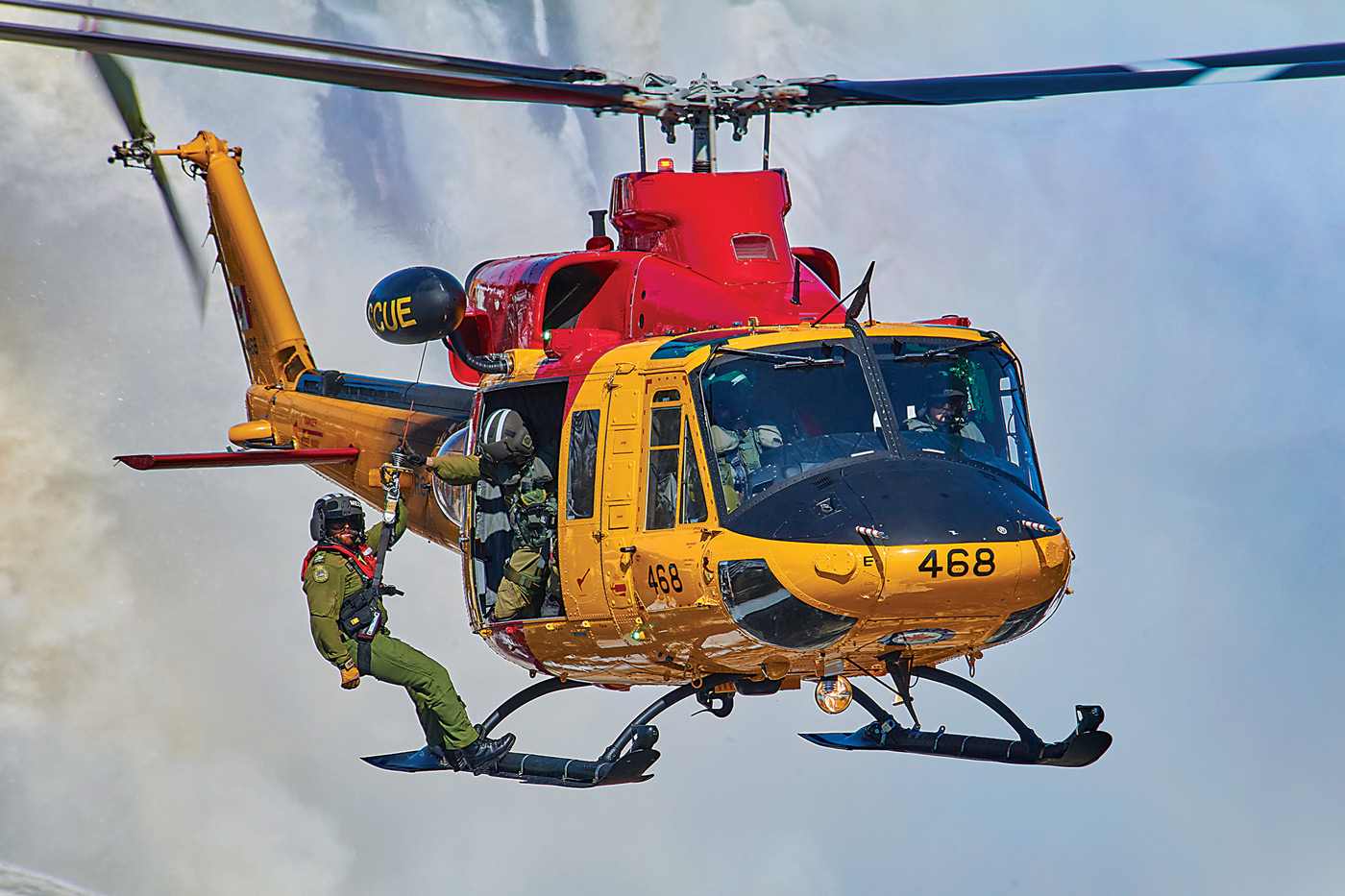Estimated reading time 6 minutes, 12 seconds.
On a given day in the remote, sparsely-populated terrain over Happy Valley-Goose Bay and rural Labrador, it is often cloudy or snowing, or both. The winters are brutal and long; the summers are warm and wet, and militaries from all over the world have used this rugged patch of land for austere weather training.

If something goes wrong in one of these training exercises–an injury or any other kind of disaster–the pilots and medical technicians from 444 Combat Support Squadron are there in a hurry. This small but effective crew of 35 military personnel and five civilians provides rapid response during training exercises at 5 Wing Goose Bay using three CH-146 Griffon helicopters. On occasion, aircrews also perform utility transport and secondary search and rescue (SAR).
“We try to have a real team-oriented atmosphere,” said Maj Ryan Snider, commanding officer of 444 Squadron. “You’re not two ships passing in the night, as many other squadrons and Wings are. You get a chance to interact with people on a regular basis, and get to know them far better than you would at a normal [posting.]”

The squadron, one of three Combat Support squadrons in the Air Force, draws a mix of new recruits and pilots and technicians with previous Griffon experience. Postings usually last three years, and they can be an effective way for new pilots to get their feet wet.
“I love it,” said Capt Marc Saucier. “The area can be really challenging, just because everything’s so remote. I don’t think you find terrain like this anywhere else in Canada, where everything’s so far apart.
“But it’s been really good. There’s not enough people in Labrador to necessitate us being called out that often in the first place, but what we do, it’s pretty different each time.”
Pilots in 444 Squadron average about 300 flying hours a year, and the posting can also be a refreshing change for seasoned pilots who transfer from other bases.
“This is nice with the family, because I’m home all the time, other than the odd night,” said Capt Neil Gabourie, a Griffon pilot who has also spent time with 427 Special Operations Aviation Squadron at Canadian Forces Base Petawawa, Ont.

444 Squadron traces its history to 1947, where it was originally activated in Rivers, Man. It later transferred to St-Hubert, Que., where it operated the Sabre fighter jets, and then moved to Baden-Soellingen, Germany as part of Canada’s commitment to the North Atlantic Treaty Organization (NATO).
The squadron disbanded in 1963, but was stood up about two months later and equipped with the CF-104 Starfighter, which it operated until 1967 before being disbanded again. Five years later the squadron was re-activated and renamed 444 Tactical Helicopter Squadron flying the CH-136 Kiowa. Stood down on Apr. 1, 1992, the squadron was reactivated in Goose Bay in 1993, now equipped with the CH-135 Twin Huey in a rescue and support role. The CH-135 was replaced by the CH-146 in 1996.
Today, the squadron operates out of two large hangars that make up a fraction of 5 Wing’s massive infrastructure footprint, supporting NORAD’s North Warning System radar sites on utility missions and supporting SAR efforts in the area when CH-149 Cormorant helicopters from 9 Wing Gander are not available.
“JRCC (Joint Rescue Coordination Centre) Halifax will call upon us from time to time,” said Snider. “They understand we’re not a Cormorant … there are limitations. But they still give us a call and say, ‘What can you provide?’ And then we’ll do our best.”
A major development at 444 Squadron over the last year has been the ongoing replacement of SAR Technicians with Medical Technicians on Griffon flight crews. The transition began in 2018 and once complete, Griffon crews will have two pilots, a flight engineer and a med tech on board. Similar transitions are taking place at 417 Combat Support Squadron at 4 Wing Cold Lake, Alta., and 439 Combat Support Squadron at 3 Wing Bagotville, Que.

“The med techs will come to us having already undergone their medical technician training,” said Snider. “We’ll top up that training to give them familiarization … to operate at the back of the cabin of the aircraft. We’ll train them on spotter duties, and then we’ll also train them on how to function on the hoist.”
Whereas SAR techs can jump out of helicopters to perform rescues at sea, med techs are not trained in skydiving or water diving and are geared toward land-based operations, said Sgt Adam Blackwell, a med tech. They also use specific hoist, insertion and extraction methods for land-based operations.
Med techs are trained as primary care paramedics and have diverse backgrounds that make them extremely versatile. “We also do a lot of clinical and hospital kind of work–not just emergent care, not just tactical care,” said Blackwell. “We are jacks of all trades in the medical field, and used as such in different postings.”
Instructed originally by SAR techs during the initial transition, med techs at 444 Squadron have now reached a point where there is a senior lead med tech able to train the more junior members.
Recruiting med techs to the relatively isolated community of Goose Bay can be difficult, but many are quickly attracted to the squadron’s warm, tight-knit culture once they arrive.
“It’s a bit different,” said Blackwell. “But honestly, it’s pretty fun. If you are an outdoorsy person, this is the place to snowmobile or have an ATV. The fishing here is pretty amazing, too.”
The squadron may have experienced a shift in focus in recent years, but its core mission remains the same. “It’s that standby response to military operations,” said Snider. “Different customers, different tactics, but the same purpose.”

